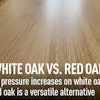I’ve done a bunch of posts recently looking at illegal logging issues in the U.S., so now let’s look at one of the really good things within the industry.
The American Hardwood Export Council (AHEC) is working on the largest ever Life Cycle Assessment (LCA) project to cover hardwood products.
The LCA study looked at a project in Australia that utilized about 15 m3 of U.S. walnut lumber. The analysis included some great results and facts:
- For walnut, federal figures place the U.S. harvest averages around 1 million m3 each year, well below the annual growth rate of 3.6 million m3. Therefore, even after harvesting, an additional 2.6 million m3 of walnut accumulates in U.S. forests every year.
- It takes about five minutes for the 15 m3 of walnut used to be replaced by new growth in the forest. (For more information on growth rates, go to their new site: Grown in Seconds.)
- The study shows that the walnut kiln-dried lumber used in the project stores the equivalent of 31 tons of carbon dioxide. It will act as a carbon store for as long as it remains in the building, longer if reused or recycled. At the end of the building’s life, if the walnut is not recycled, it could be burnt as a renewable fuel generating up to 37,000 KWh of energy.
- In LCA terminology, the walnut used in the project has a “Global Warming Potential” of minus 13 tons.
U.S. hardwoods win out there, too, over many others, because so much of the energy is produced by sawmill residue rather than fossil fuels.
The study looked into freight costs in terms of energy. It is well established that sea freight’s environmental impact is far lower than rail and road. The study determined that transporting hardwoods over 6,000 km across the Atlantic requires little more energy than an overland journey of 500 km.
Actually, the LCA found that for the factor known as “Global Warming Potential (GWP),” harvesting and milling and transport have smaller impacts than the kiln drying of the lumber. But U.S. hardwoods win out there, too, over many others, because so much of the energy is produced by sawmill residue rather than fossil fuels.
The study tells us what we all know: Wood is Good. And the U.S. hardwood industry is starting to get the hard numbers to prove it again.
































